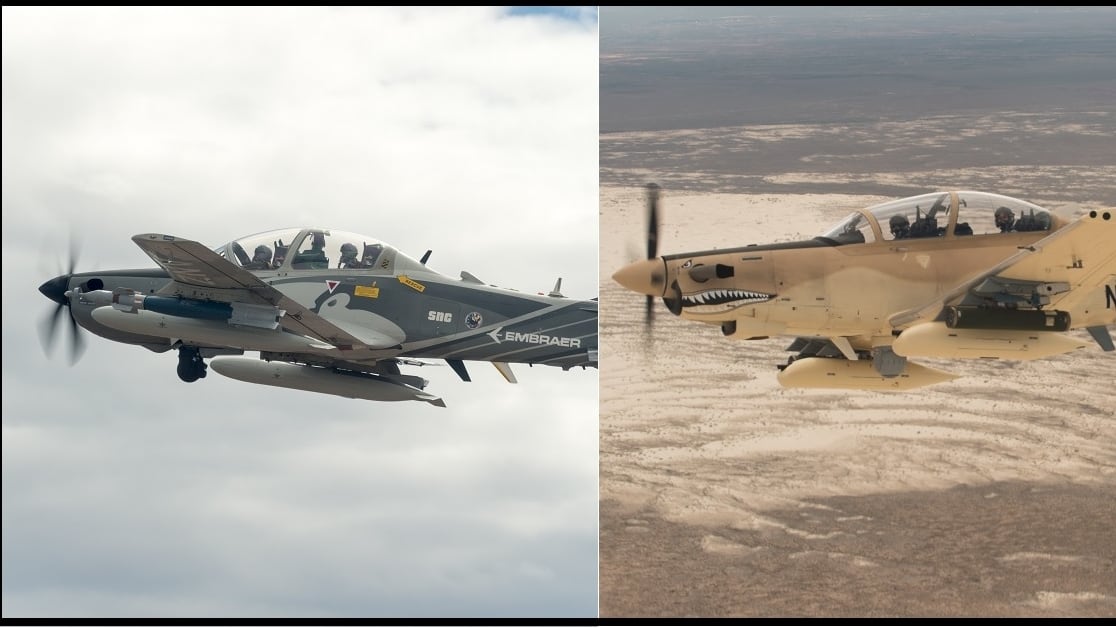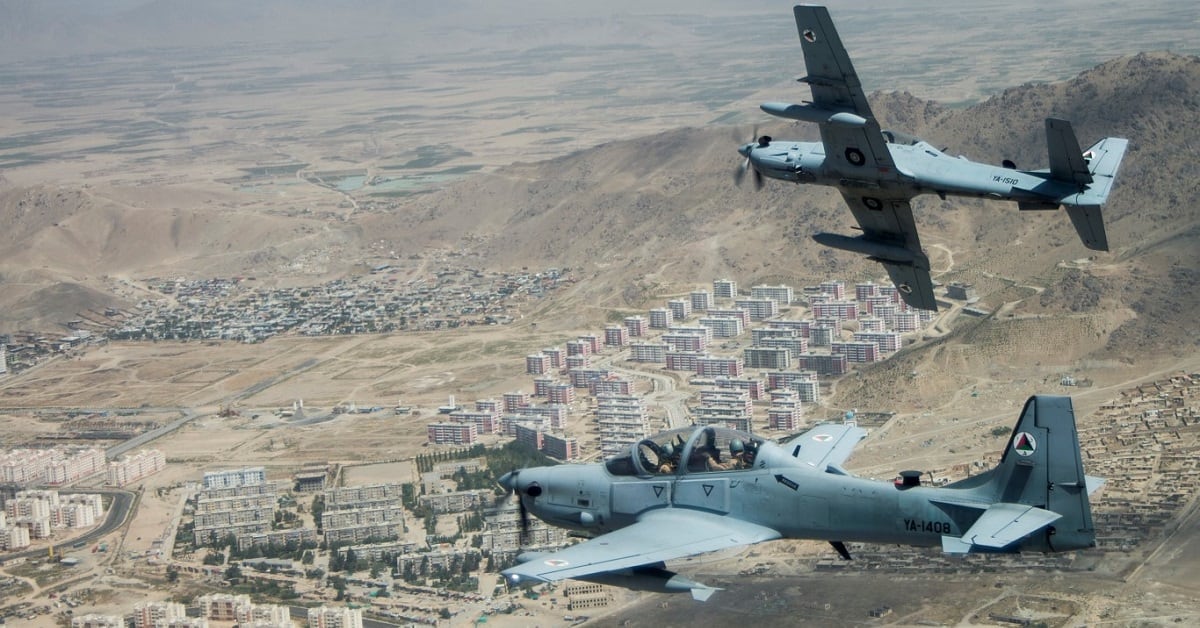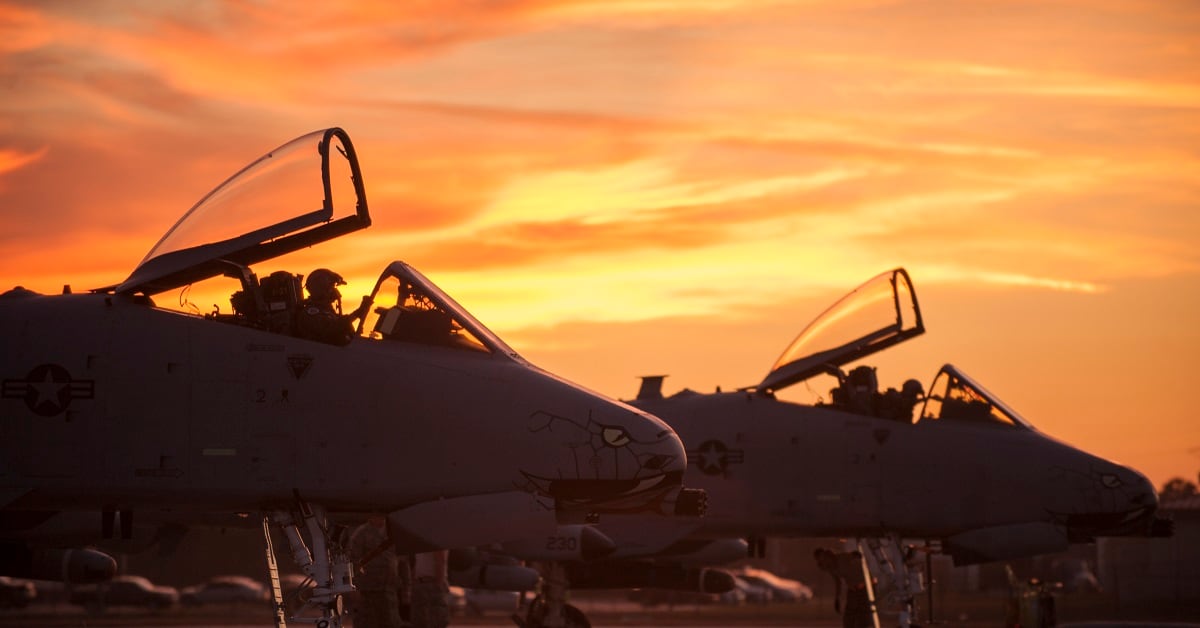WASHINGTON — If the U.S. Air Force takes two years to conduct a light-attack experiment — made possible in part by industry investments — and then abandons it, why should defense contractors buy into the next one?
That was the question posed to the Air Force’s top uniformed acquisition official by one attendee of a Feb. 1 event held by the Air Force Association.
"I think there’s a skepticism out here,” said Mike Loh, a retired Air Force four-star general who now runs a consulting firm.
“There’s got to be a requirement or funding or both at the end of that, otherwise you’ve got guys in industry that are investing a lot of money, and they’re looking back at light-attack aircraft,” he said. “What did you do? Nothing. You put it on the back burner.”
RELATED

Loh’s question highlights the confusion surrounding the Air Force’s path forward on the light-attack experiment, as well as unease about the way the service approaches industry investment in short-term experimentation or development campaigns with no clear contract award at the end of the process.
Industry investments have already allowed the service to fly the aircraft, set up logistics infrastructure and try new capabilities
Last month, Air Force officials confirmed the service would not put out a final solicitation for the light-attack program. Matt Donovan, its undersecretary, said on Jan. 18 that the service preferred to conduct additional experiments and wanted to broaden the campaign.
RELATED

This latest shift follows a failed attempt to acquire a light-attack plane about a decade ago. In 2009, the Air Force began the Light Attack/Armed Reconnaissance program, and its competitors — the Textron AT-6 and Sierra Nevada Corp.-Embraer A-29 Super Tucano — are the same two aircraft involved in the current experimentation campaign.
That program fizzled out due to political reasons around 2013, but the Air Force is still hopeful it can press ahead with its latest light-attack effort.
“I have ideas of how we go forward, and I think we know how we go forward,” Lt. Gen. Arnold Bunch, the military deputy for the Office of the Assistant Secretary of the Air Force for Acquisition, said of the light-attack experiment on Friday. ”We are planning to broaden the experimentation out and carry the experimentation forward, and I think when our budget hits, you’ll understand more of what we’re doing."

Bunch said the experiment has helped validate the Air Force’s requirement for a light-attack capability that can counter violent extremist threats in a low-cost manner.
“What I don't want to do is end up in a position that I’ve got F-35s chasing small buses or mopeds or whatever else we may be trying to chase,” he said.
But when it came down to it, Air Force officials looked at the new National Defense Strategy — which prioritizes a high-end fight — and decided against making a large-scale buy of light-attack planes in the upcoming budget, he said.
The Pentagon’s annual report by the director of operational test and evaluation, released Thursday, shed some light on what may have been the Air Force’s initial plans for the light-attack program.
The service would have purchased 359 aircraft for eight operational squadrons and three training units, with a contract for either the AT-6 or A-29 to be awarded before September, the report said. The Air Force also considered getting a waiver so that it conduct component-level, live-fire tests for both aircraft before making a final downselect.
An Air Force spokeswoman confirmed to Defense News that the timeline and procurement quantities noted in the DOT&E report are no longer accurate.
Expanding the experiment
What becomes of the light-attack experiment remains unknown — Air Force officials haven’t made it clear what the service wants to see in future stages of the effort.
Air Force Chief of Staff Gen. Dave Goldfein stressed the importance of getting buy-in from international militaries during a Jan. 26 interview with Defense News. He also said aircraft like helicopters and drones could be considered in addition to the turboprop planes that dominated the first phases of the experiment.
On Friday, Bunch said the service could look at “technologies we may be able to put on platforms or solutions that we may not have thought of” during the first phase of the experiment.
“I know many people have talked about specific platforms. What I want to talk about [is] not necessarily that,” he said. That may point to a systems-of-systems approach similar to what the Air Force is seeking with its Advanced Battle Management System — a replacement for its JSTARS ground surveillance planes that will be comprised of a network of existing and new sensors.
But the Air Force will need to be clear with industry about what it wants, said Andrew Hunter, head of the defense-industrial initiatives group at the Center for Strategic and International Studies.
For example, “if the answer is that they need to do some kind of dramatic cost-cutting initiative, give them a number,” he said.
It might also benefit the Air Force to incorporate prototypes in the large-scale international exercises it regularly holds with partners, which has the added benefit of giving foreign militaries more exposure to technology that the U.S. might buy, he said.
“I think people will stick with it for a while because there’s still a belief that the Air Force will invest and, more important, that there is still a broad international market for this capability,” Hunter said of the light-attack experiment.
But, he added, the uncertainty regarding the future of the effort illustrates the constraints of rapid prototyping and experimentation: There’s no promise of a program of record at the end of the road.
“[While] there is some value of exercising the muscle … not every one of these is going to lead to a production program,” he said.
RELATED

After two years of experimentation, the Air Force still doesn’t have an answer for how it should fill its light-attack requirement, but Bunch, the acquisition official, was adamant the experiment has had value.
"I may be the only one that believes it, but I actually believe it has been a success. We tried something we hadn't done. We built a partnership with industry. We experimented. We learned a lot, and we got to the point where we weren't ready to make a large buy decision at this stage. I still believe that is learning,” Bunch said.
“And I believe it is something we will take the lessons learned and roll it into how we go forward,” he added. “We’ve got to look at ourselves in the mirror and say: ‘Was that good or was it bad, and how do we do it better?’ We’ve got to do our own image check."
Valerie Insinna is Defense News' air warfare reporter. She previously worked the Navy/congressional beats for Defense Daily, which followed almost three years as a staff writer for National Defense Magazine. Prior to that, she worked as an editorial assistant for the Tokyo Shimbun’s Washington bureau.








